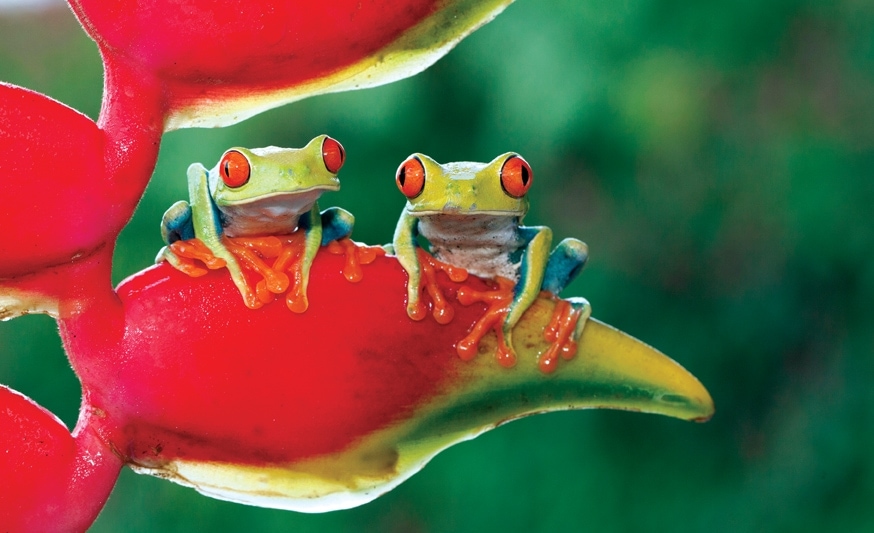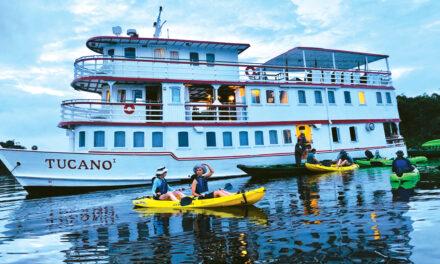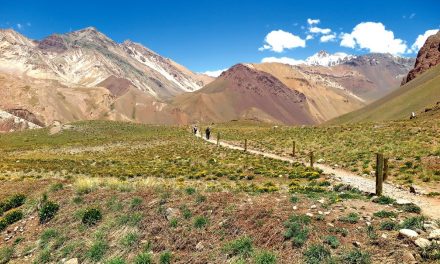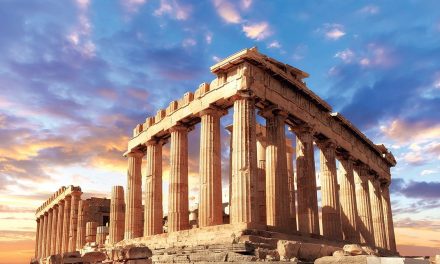Costa Rica
Costa Rica Wildlife Vacation
Article and photography by Johanna Read, TravelEater.net

I get a good sense of how abundant the wildlife is in Costa Rica as soon as I step out of the airport. As I follow my guide extraordinaire, Emilio Solana, to the car, he politely says, “watch your step”. I glance down thinking, “oh, that rock is too close to the wall for me to trip over.” And then Emilio says, “that’s a cane toad.” It’s the biggest amphibian in the whole country, just hanging out at the airport giving visitors their first look at Costa Rica’s abundant wildlife.
As my week in Costa Rica progresses, I quickly lose track of the number and types of wildlife we see. I’m fortunate to have Emilio as my guide, as he’s an expert in Costa Rican history, geography, culture and wildlife. He not only names every bird we see, he can name them just from hearing their call.
Emilio has his work cut out for him. Costa Rica has 5% of the planet’s biodiversity despite only having 0.03% of the earth’s landmass. That means 850 bird species, 205 mammals, 160 amphibians, 220 reptiles, 1000 fish and 10,000 species of plants and trees. If you want to see animals on your vacation, you’ll love Costa Rica. G Adventures offers small group tours if you’d rather not travel independently.
The efforts the country has taken to preserve its plant and animal biodiversity are astounding. For example, they have reversed deforestation (the world’s first tropical country to do so). Over 54% of the country is forested, when it was only 21% in the 1980s. A whopping 26% of the country is protected natural land, 93% of their electricity is from renewable resources, and Costa Rica plans even greater measures to become the world’s first carbon neutral country by 2121. There’s no need to even buy bottled water in Costa Rica: tap water is perfectly drinkable, including for foreigners. All this makes it an ideal country for a tropical vacation (or, for those so inclined, an ideal retirement base).
My travels are based within driving distance of Costa Rica’s northwest international airport, Liberia. My trip begins in the forested foothills of the Rincón de la Vieja Volcano and the national park of the same name, in the province of Guanacaste. The lush forests are rich with wildlife. Just on my way to breakfast I see several coatimundis and a monkey. A cartoon-like toucan and more coatis hang out near Buena Vista Lodge’s open air restaurant at lunch.
Buena Vista Lodge is more than a hotel. Guests can learn about traditional Costa Rican cooking techniques, try their hand at making tortillas and other specialties, then taste their handiwork accompanied by the country’s excellent coffee.
This eco-resort also encourages overnight and day guests to explore the primary tropical forest. You can choose from a hike or horseback ride to a waterfall, flying through the air on ziplines, walking amongst the treetops on 16 hanging bridges, and even ride a ground level water slide that twists around tree trunks. We see bright blue butterflies, lizards, squirrels, monkeys, coatis and enough birds to have a birdwatcher pull out his checklist. Emilio identifies them all and tells me about their lives.
After exploring the tropical forest, everyone needs a break. Buena Vista Lodge delivers with natural thermal pools fed by the Rincón de la Vieja Volcano. I try each of the five differently-temperatured pools, plus the sauna, and then cover myself with volcanic mud. I gaze out at the jungle and babbling brook as the mud dries and try to count the number of different bird calls I hear.
Another great way to see Costa Rica’s wildlife is with a wetlands tour. In El Viejo Wildlife National Refuge, we take a boat ride on the Tempisque River.
The tidal river is teeming with birds, crocodiles, turtles, bright green, grey and orange iguanas, capuchin and howler monkeys, and several species of bats (Emilio points out eight long nose bats cutely lined up in a column on a tree trunk). Costa Rica’s lizards’ names spark the imagination — there’s ctenosaurs, green basilisks, and even Jesus Christ lizards, so named because of their ability to run on water.
At El Viejo there are even several bird species not found anywhere else in Costa Rica, including laughing falcons, roseate spoonbills, wood storks and great egrets. Also here, but more difficult to see, are the breeding pair of Central America’s largest aquatic bird, the jabirú, plus wild cats and peccaries, which look a little like a fuzzier warthog.
Of course Costa Rica’s coast has plenty of wildlife too. Tamarindo, in Guanacaste on the Pacific coast, is a great place to base yourself to explore everything the coast has to offer. The town has plenty of tourist infrastructure (you’ll have your choice of gelato shops) and has several popular beaches.
Animal lovers will want to observe the tiny animals that live in the tidepools at quiet Langosta Beach. Kayakers can go birdwatching in the Tamarindo Estuary and watch sunbathing crocodiles hope a monkey swings down close. Huge leatherback turtles lay eggs at Grande Beach between November and April.
A sailing trip is another way to see Costa Rica’s wildlife, as well as its stunning scenery. Dolphins and whales sometimes show off for sailors. There are several snorkelling spots and kayakers can get up close to the green shores. I was amazed to see my first pufferfish, covered in polka dots, while snorkelling.
Wildlife was even abundant at my hotel, Tamarindo Diria, on a popular beach and surrounded by shops and restaurants, After taking a swim in the gentle waves (it’s an ideal place to learn to surf), I gaze out to the ocean and notice several iguanas perched on a wall enjoying the same view. A beautiful squirrel — variegated, I later learn from Emilio — alternatively poses for my camera and takes flying leaps between lounge chairs.
No matter where are you are in beautiful Costa Rica, it’s difficult not to see wildlife. And thanks to the country’s impressive sustainability measures, it looks like that wildlife will be around for generations to come.
www.visitcostarica.com/en
Click on cover to view published article






